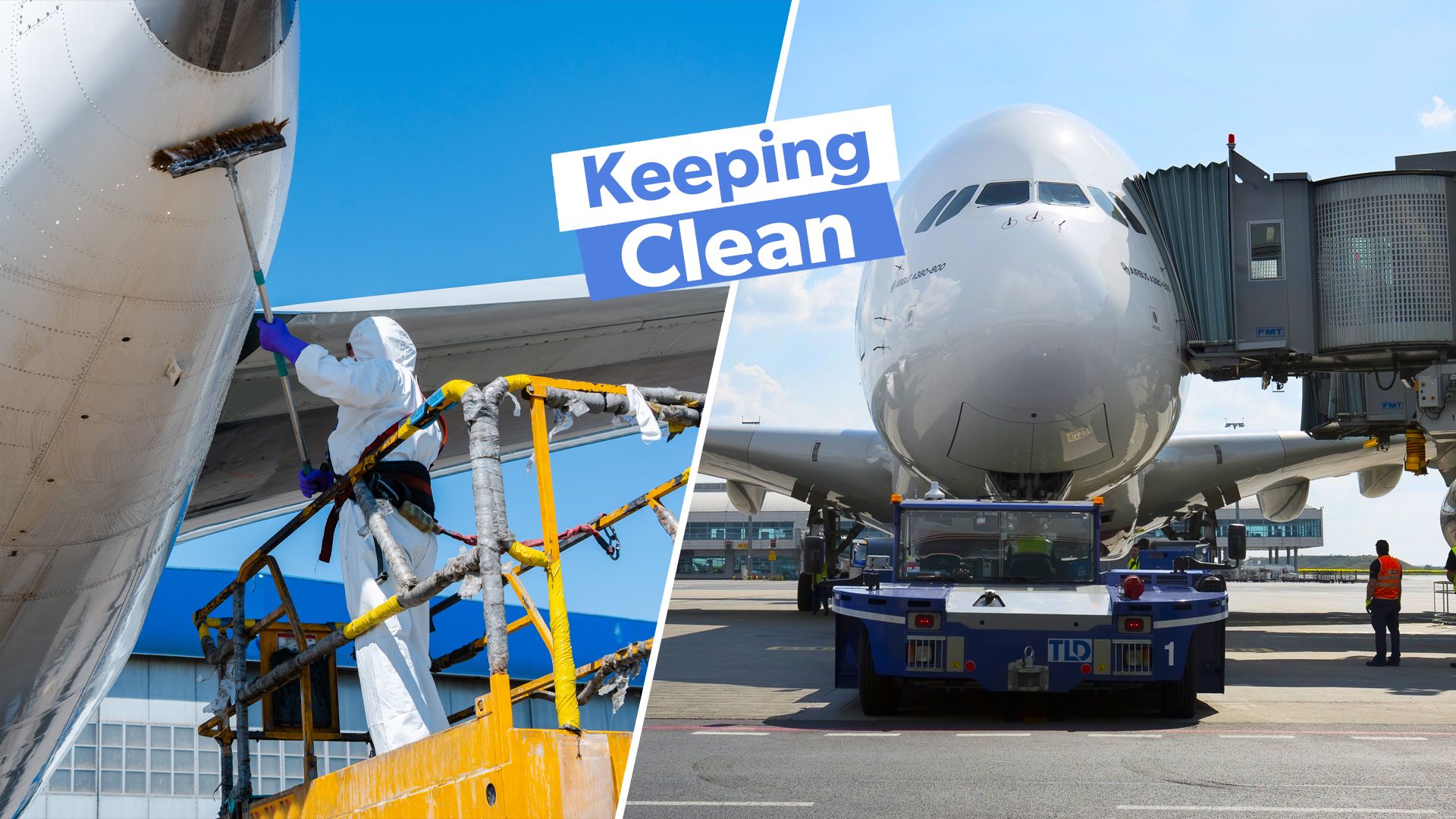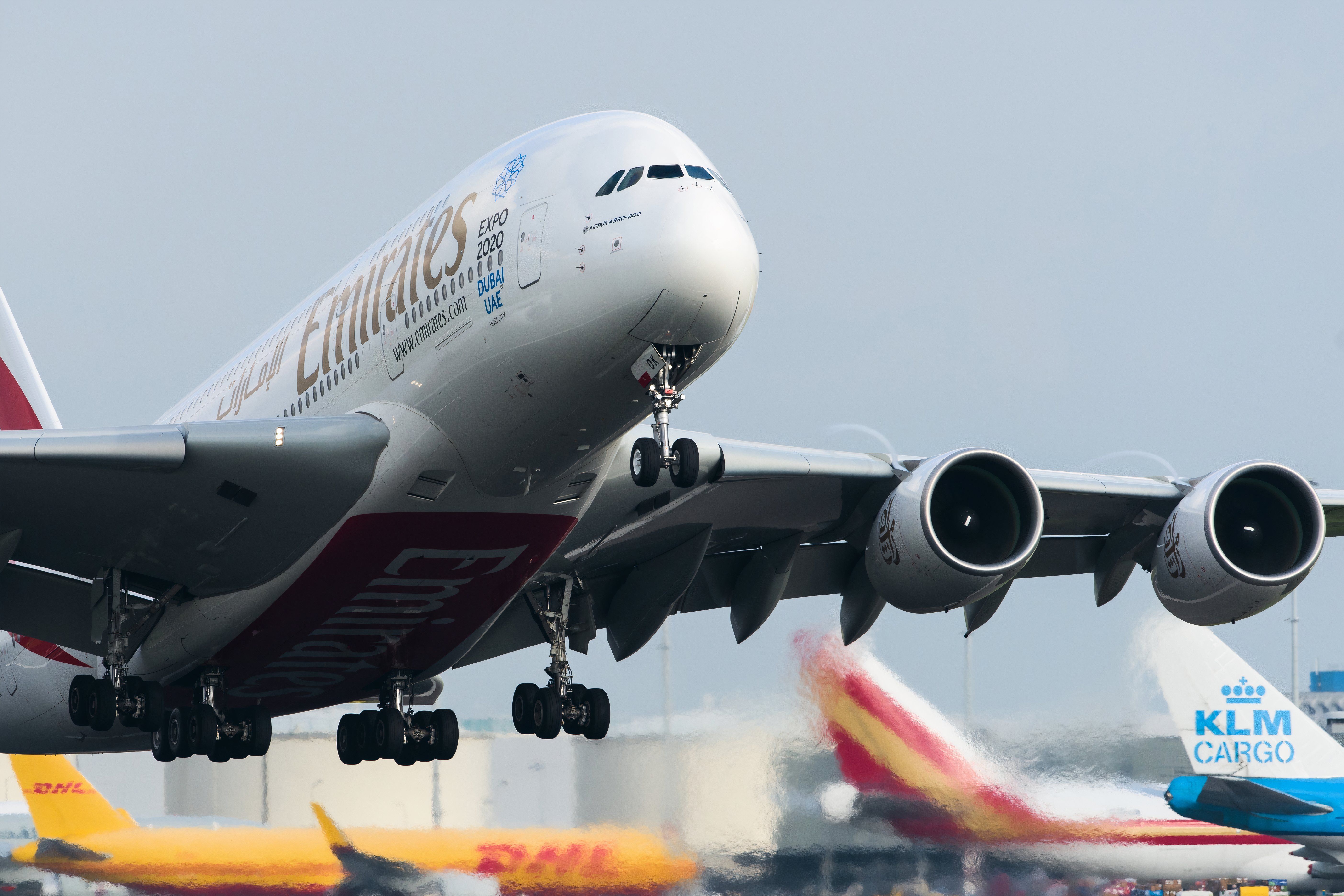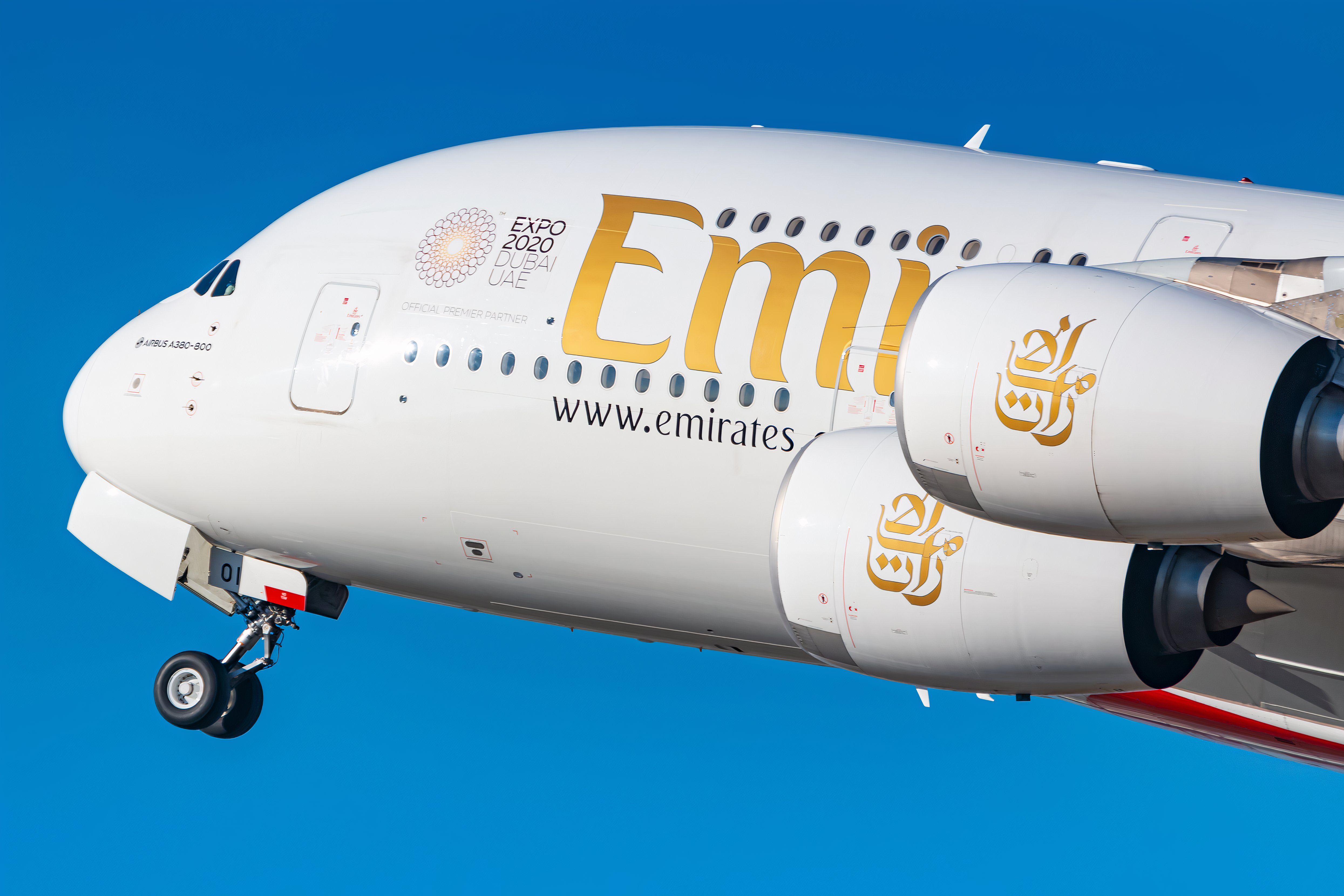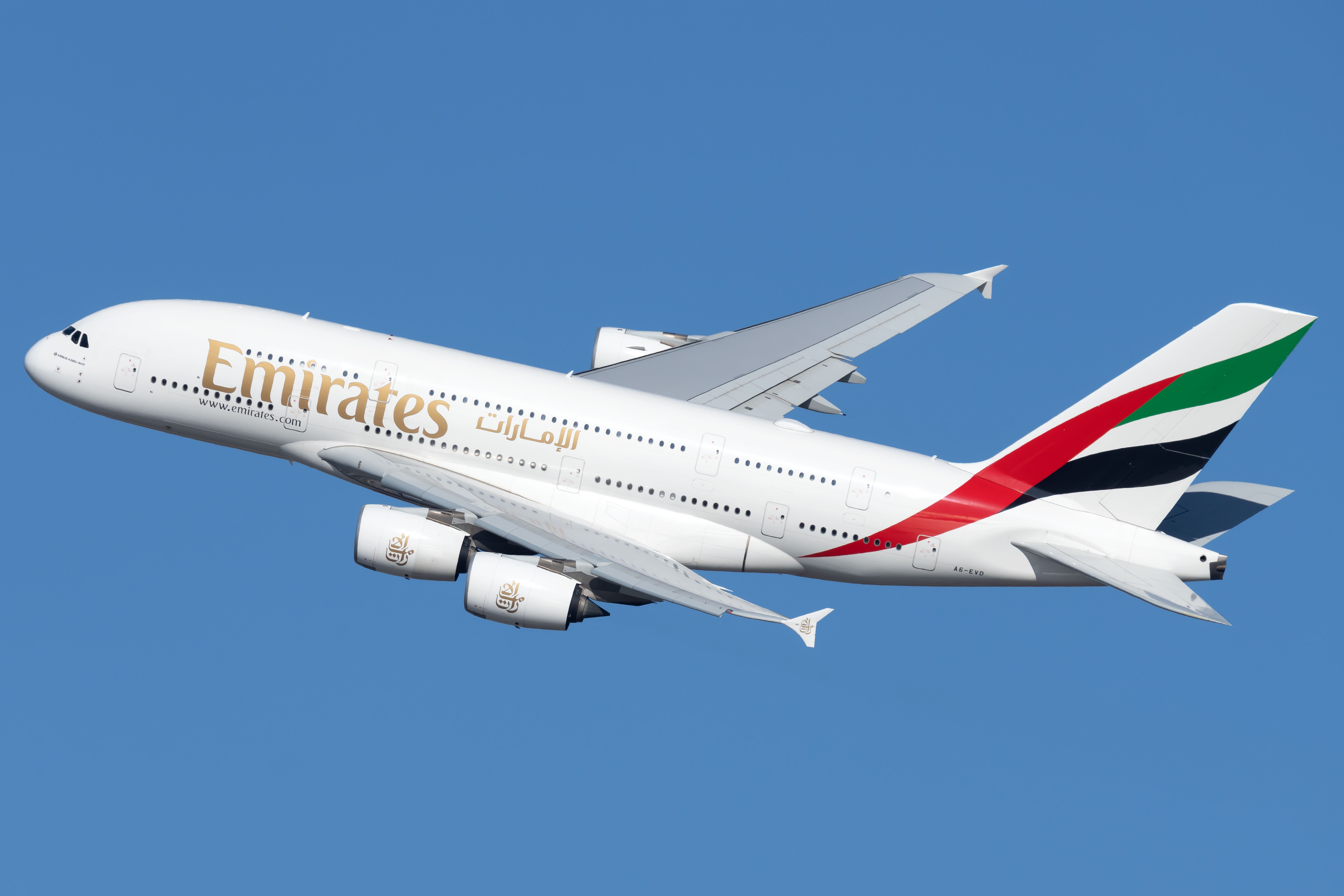Not only does Emirates have the world’s largest fleet of Airbus A380 aircraft, but the location of its hub at Dubai International Airport (DXB) is in one of the extreme localities of the world – a desert. This means that the carrier’s aircraft get covered in dust and require regular washing to remain sparkling clean. But how do you even wash an Airbus A380? Let us find out.
The challenges of cleaning an A380
There are a few distinct challenges that Emirates faces when it comes to cleaning and washing its large fleet of Airbus A380 aircraft.
- The A380’s surface area is enormous, and Emirates has 115 of them that it needs to keep in top shape. This means that the airline must put in hundreds of work hours to keep the fuselage clean, together with over 11,300 liters of water.
Photo: Verzellenberg | Shutterstock
- Dubai, Emirates’ hub city, is located in a desert and thus does not have an unlimited source of fresh water. Saltwater isn’t suitable because it will decrease the lifespan of the aircraft’s materials (although newer aircraft are more resistant to these effects). Plus, once the salt water evaporates, it often leaves salt crystals, meaning that the aircraft will need cleaning again.
- Because an A380 is so big, even a small layer of particles on the surface can slowly build up and substantially affect the aerodynamics and fuel burn. This fuel burn could cost the airline thousands of dollars and cause unnecessary environmental damage.
How does Emirates clean its aircraft?
In order to clean its Airbus A380s, along with the rest of its more than 260-strong fleet, Emirates uses a process called an ‘aircraft dry wash.’ It works as follows:
A liquid cleaning agent is applied manually to the entire aircraft. This foam then hardens and becomes a somewhat sticky film over the surface. This film captures particles and dust in its bubbles. Workers then use a microfiber cloth to work over the plane and strip away the remaining chemicals. During the removal process, the microfiber cloth acts as a polisher. The aircraft is left clean and shiny.
This process has the advantage of not using any water, thus saving over 11 million liters per year. Because of the technique used, the aircraft only needs to be cleaned three times every year (as opposed to five or more). Plus, it leads to potential fuel savings thanks to having no dirt or grime on the wings or in components.
Photo: Lukas Wunderlich | Shutterstock
Lastly, a considerable advantage is that maintenance on the aircraft can be completed in parallel to the process. Because the dry wash chemicals are applied and then left, workers can move on to inspect engines and overhaul systems without getting in the way. Plus, as there is no water, there is no danger of electrical systems getting wet.
There is another solution that is a bit unorthodox but would also solve this washing challenge. Emirates could just fly the aircraft to another region on the planet that has ample water and facilities to wash the plane; perhaps an area with a higher than average rainfall. However, this would cost plenty in wages and fuel burn just to fly the plane to another region.
It takes a team of 15 professionals around 12 hours to clean an Airbus A380 from top to bottom. The video below demonstrates Emirates’ cleaning technique:
The world’s largest operator of the Airbus A380
Data from ch-aviation shows that Emirates currently has 188 Airbus A380s in its fleet, making it by far the world’s largest operator of the superjumbo. The next-largest operators are:
- Singapore Airlines (12)
- British Airways (12)
- Qantas (10)
- Korean Air (9)
- Lufthansa (8)
- Qatar Airways (8).
Photo: Vincenzo Pace | Simple Flying
Emirates’ Airbus A380s have an average age of around 10 years old, and come in a variety of configurations. These range from four-class aircraft capable of carrying a total of 484 passengers (14 in first class, 76 in business class, 56 in premium economy, and 338 in economy class) to high-density two-class aircraft with a capacity for 58 passengers in business class and 557 in economy class.
The Airbus A380s form part of Emirates’ staggering widebody fleet, along with the Boeing 777-300ER. Together, these aircraft connect Dubai International Airport with 75 countries around the world. Most recently, the airline has added routes to Bogotá (BOG) via Miami (MIA) and to Antananarivo (TNR).
Emirates will soon welcome both the Airbus A350-900 and Boeing 777X to its fleet, marking a new era for the seemingly unstoppable airline. The airline’s first route operated by the A350 is scheduled to be to Edinburgh (EDI).




